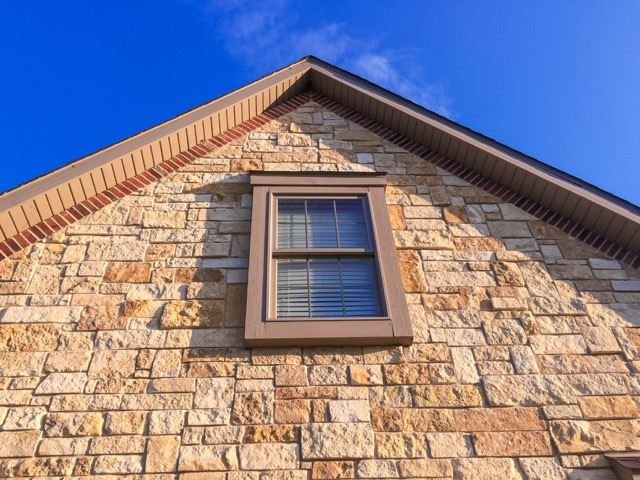7 Types of Siding You Should Consider As a Home Owner
7 Types Of House Siding You Should Consider As A Homeowner
Whether you are a new home owner, or experienced, you should have some knowledge on home siding options. Home owners should understand both the pros and cons of popular siding options, and understand what might be best for them. Here we have provided a simple break down of some popular options for you to get a better understanding of what your contractor or real estate agent are talking about when discussing siding!
1. Vinyl Siding
Vinyl siding is a popular choice for homeowners looking to update the exterior of their homes. It is an affordable, durable, and low-maintenance. Material is available in a variety of colors and styles, making it easy to customize the look of your home.
Pros:
It does not need painting
Vinyl Siding is cost-effective
No need to spend a lot of energy and time maintaining it
Cons:
It may allow moisture below the surface
Not good for the environment
2. Wood Shingle Siding
Wood Shingle siding is not very expensive. It can give your house a natural look. It has low maintenance cost and is very good for the environment.
Pros:
Wood Shingle Siding is eco friendly
You can use it as a low-cost alternative to another siding
Cons:
Wood provides no insulation
Insects and water can damage wood shingle siding
3. Metal Siding
Metal siding is a type of exterior wall cladding made from metal, such as aluminum or steel. It is used to protect the exterior walls of homes and other buildings. It is also durable and can withstand extreme weather conditions. Metal siding is more common on commercial buildings; however it can be used to build smaller sheds or buildings.
Pros:
It requires extremely low maintenance
Bugs resistant
It is recyclable
Cons:
High-quality metal siding is very expensive
The installation process is challenging
4. Stone Siding
Stone siding, also known as a stone veneer or manufactured stone, is a type of siding used for the exterior of homes or buildings. It is made from molds of stone. Stone siding adds beauty, durability, and value to any home exterior.
Pros:
It uses natural and sustainable materials
Being sustainable, you can reuse it after any home damaged
Cons:
It is very expensive
5. Brick Siding
Brick siding provides a classic, timeless look that is both beautiful and durable, and can last for decades with proper maintenance. It also offers superior protection from bad weather, fire, insects, and other elements.
Pros:
Brick siding is fire resistant
Durable and weather resistant
Low maintenance
Cons:
There is a problem with moisture
Expensive
6. Fiber Cement Siding (Hardie Plank)
It is made from a mixture of cement, sand, and cellulose fibers that are compressed together. Fiber cement siding is strong, durable, and fire-resistant. It also comes in many different styles and colors to fit any style of home.
Pros:
It can withstand all types of environments
The durability is high and it can last longer
Cons:
The insulation is difficult in fiber cement siding
The maintenance can be difficult sometimes
7. Engineered Wood Siding
Engineered wood siding is a durable, cost-effective alternative to traditional wood siding. Engineered wood siding is designed to be lightweight, yet extremely strong and resistant to decay and insect damage.
Pros:
The installation is inexpensive
Resistant to weather and water damage
You can expect it to last 20-30 years
Cons:
The color can fade in future
It can allow moisture if it is cracked
(WARNING: Masonite siding is another popular form of siding but has been discontinued. If you have masonite siding it's important that you keep it caulked and painted to prevent deterioration. If it's already rotting and swelling you should consider replacing your siding. If you're unsure about the state of your masonite siding, contact an expert for an inspection to understand what your next steps should be.)
Keeping it Budget Friendly
Vinyl siding is one of the most affordable and durable materials available, making it a popular choice for those looking for an inexpensive way to update the exterior of their home. Other low-cost options include aluminum siding, fiber cement siding, even wood siding and engineering wood siding.
Each of these materials provides a unique look and feel to the outside of your home, while also offering protection from the elements. Additionally, painting or staining these materials can be done as needed to maintain their aesthetic appeal over time.
Also consider Fiber Cement siding. It is one of the most popular in North America. It has lifetime value and curb appeal. So, you can choose it for its durability and sustainability. It will save money in the long run by increasing the home value.
Frequently Asked Questions:
What type of siding is right for me?
The type of siding that is right for you will depend on several factors, including a budget, climate, style preference, and the condition of your home's existing siding. Options include vinyl, wood, aluminum, fiber cement, stone veneer, and many more. Choosing the right siding for your home can be a difficult decision and it is recommended that you speak with an experienced contractor to discuss all of your options.
What are the benefits of metal siding as a whole, regardless of a specific type?
Metal sidings are more durable, fire resistant, easy to maintain, and recyclable. In addition, insects don't attack metal bodies. So, it is safe from insects as well. Most people like metal siding for low maintenance. You also can choose Metal siding for these qualities.
What is the best house siding for a tiny home?
It depends on your choices. If you want an earthy appeal to your home, you can choose materials made from clay and wood. On the other hand, stainless steel, aluminum, and corrugated metal are the best for a modernist touch.
Are there different types of vinyl siding?
Yes, there are different types of vinyl siding. The most common types are wood grain, board, batten, dutch lap, traditional lap, cedar shake, hand split shake, traditional shake, half round, etc. So, you have plenty of options to choose from.




